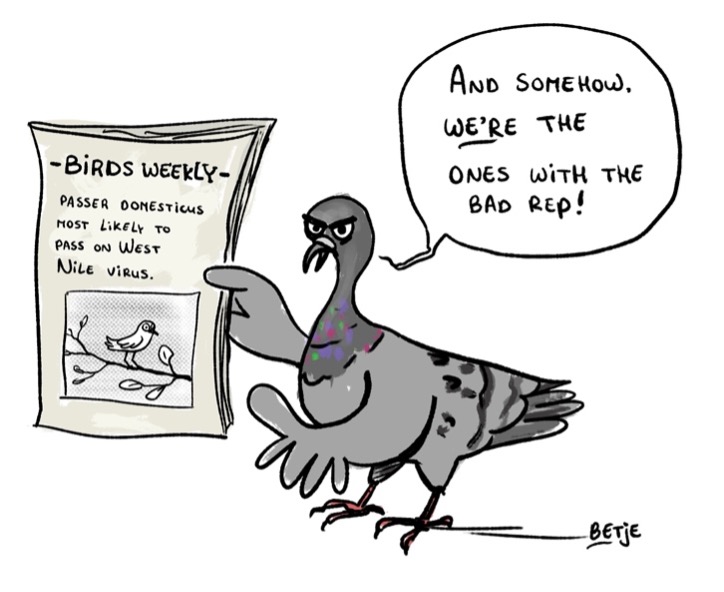Third annual IDAlert gathering: sharing insights and progress
The IDAlert project, launched in June 2022, is making significant progress in addressing the growing threat of vector-borne diseases in Europe and beyond. With a consortium of 19 partners from Sweden, Germany, France, Spain, Greece, The Netherlands, Italy, the UK, and Bangladesh, the project aims to develop innovative tools and strategies to mitigate the risks associated with these diseases in the face of climate change.
This year, the consortium convened online on 16-17 October for their annual General Assembly. A significant focus was placed on the project’s case studies designed to assess interventions in tackling the increasing risk of vector-borne diseases across Europe.
The event also featured a special guest, Betje, a cartoon artist who captured our discussions with lively and humorous cartoons, highlighting our research.
Snapshot of activities across countries
Spain: urban and rural mosquito control
In Barcelona, researchers are addressing mosquito breeding in storm drains—common habitats for Aedes albopictus and Culex pipiens, which transmit diseases like dengue and Zika. The intervention involves modifying storm drains to prevent water accumulation, thereby reducing breeding sites.
In Girona, a study focuses on monitoring mosquito populations and bird species in wetlands and rice fields to assess the risk of West Nile virus transmission. Researchers utilize bioacoustics and bird observations to track both species and mosquito populations effectively.
Greece: island and nationwide studies
On the remote islands of Lipsi and Kastelorizo, researchers are exploring unique challenges in monitoring and controlling mosquito populations. They have engaged local communities through Knowledge, Attitudes, and Practices (KAP) surveys while promoting public health education through mosquito collection efforts.
A broader study across Greece is evaluating various mosquito control methods, emphasizing larviciding and adulticiding techniques to determine their effectiveness.
The Netherlands: zoo as a sentinel site
In Rotterdam, the local zoo has been designated as a sentinel site for virus surveillance. Regular sampling of mosquitoes and wild birds allows researchers to monitor the circulation of viruses such as West Nile and Usutu.
Bangladesh: urban and coastal surveillance
The Bangladesh case study encompasses two distinct regions: Dhaka—one of the world’s most densely populated cities—and Teknaf, a coastal area home to many Rohingya refugees. In Dhaka, mosquito surveillance spans 24 zones with a focus on indoor mosquitoes. BG-Sentinel traps target Aedes aegypti and Aedes albopictus, key vectors for dengue.
In Teknaf, surveillance efforts address complex environmental challenges while monitoring mosquito populations in a coastal setting.
Germany: smart traps and urban climate modeling
Heidelberg’s case study integrates mosquito control with ecological monitoring and urban climate modeling. Researchers deploy ovitraps to monitor populations of Aedes albopictus and Aedes japonicus throughout the city. In addition to trapping efforts, they are exploring urban climate modeling using graph neural networks to understand how factors like temperature, humidity, and green spaces influence mosquito activity.
Innovative tools and platforms
A highlight of the assembly was the presentation of Epi Outlook—a new platform being developed by partner BSC as an early warning system for infectious disease risks, based on indicators developed in the project and in collaboration with other EU research projects and organisations. A first proptotype is planned in the coming months, with a fully operational version later in the project.
Collaborative approach and future directions
The second day of the event fostered discussions among partners about ongoing work and synergies across various research areas—from indicator development, inequality studies and projection maps, to the decision support tool which will aim to help policymakers make quick assessments of the impact of climate policies on disease outcomes. IDAlert’s contributions to the European Climate-Health Cluster and the upcoming work was also highlighted.
The assembly concluded with a session focused on exploitation strategies, encouraging project partners to consider how they will use IDAlert’s results once the project ends.
As IDAlert progresses, its research findings and innovative tools will continue to contribute to mitigating the impact of vector-borne diseases across Europe and globally.







